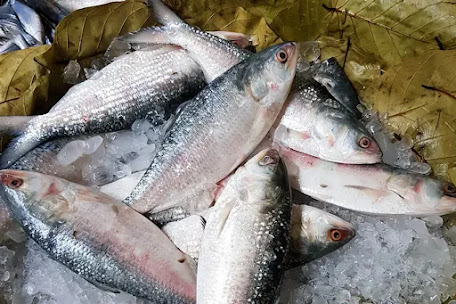Search This Blog
"Catch Fishing" is an immersive angling experience that transports players to picturesque fishing spots around the world. With realistic physics, diverse fish species, and a rich progression system, it offers an authentic and rewarding fishing adventure for players of all levels. Join a vibrant community of anglers, compete in tournaments, and experience the thrill of the catch in "Catch Fishing."
Featured
- Get link
- X
- Other Apps
How to catch Hilsha
Hilsa fish, also known as ilish or hilsa herring, is a popular fish found in the rivers and coastal areas of South Asia, particularly in Bangladesh and India. Here are some common methods used to catch Hilsha fish:
Fishing Nets: One of the most common methods to catch Hilsha fish is by using fishing nets. Large nets, known as seine nets or gill nets, are spread across the water bodies where the fish are expected to pass through. The nets are then pulled in, trapping the fish inside.
Traditional Fishing Boats: In many regions, traditional fishing boats known as "dhonis" or "noukas" are used to catch Hilsha fish. These boats are equipped with large nets that are cast into the water and then pulled back to capture the fish.
Fish Traps: Fish traps, locally called "katas," are another method used to catch Hilsha fish. These traps are made of bamboo or other materials and are placed strategically in the water. The fish swim into the traps, attracted by bait, and get trapped inside.
Hand Line Fishing: Hand line fishing is a simple and traditional method used for catching Hilsha fish. A fishing line with a hook is held by hand, and bait is attached to the hook. The line is then cast into the water, and when a fish takes the bait, the line is pulled in to catch it.
Longlines: Longlines are commonly used by commercial fishermen for catching Hilsha fish. A longline consists of a main fishing line with multiple baited hooks attached to it. The line is set in the water for a period of time, allowing the fish to be caught on the hooks.
It's important to note that fishing regulations and restrictions may vary depending on the location and local laws. It's always a good idea to familiarize yourself with the specific regulations and guidelines for fishing in your area before attempting to catch Hilsha fish or any other species. Additionally, sustainable fishing practices should be followed to help preserve fish populations and the overall ecosystem.
- Get link
- X
- Other Apps



Comments
Post a Comment